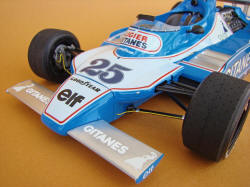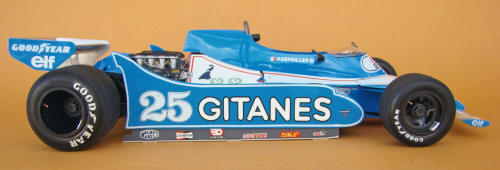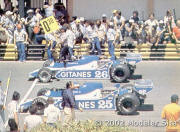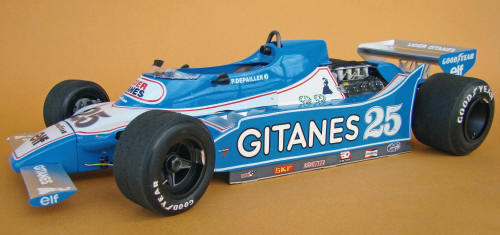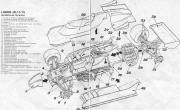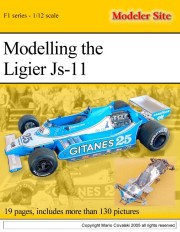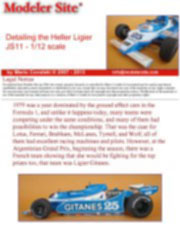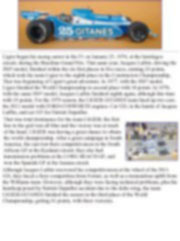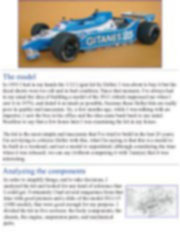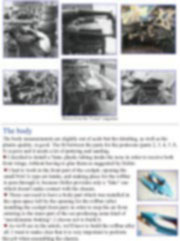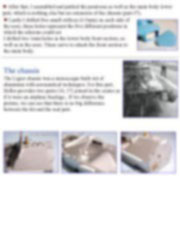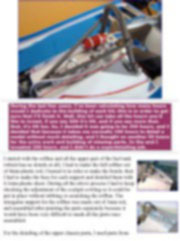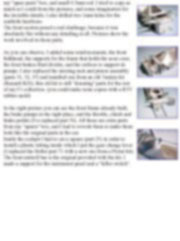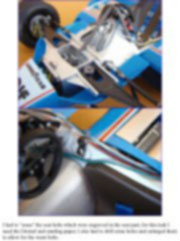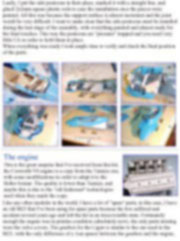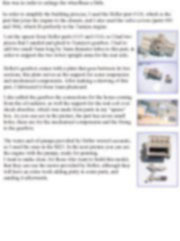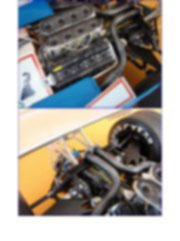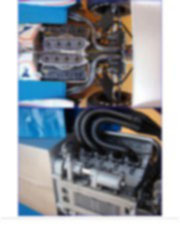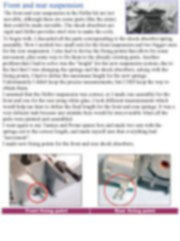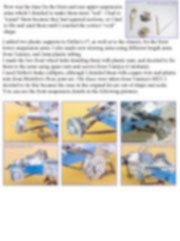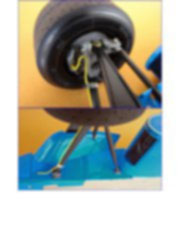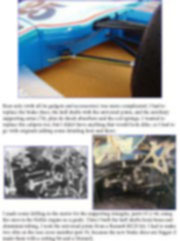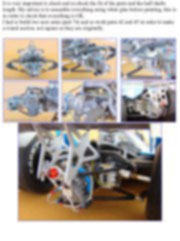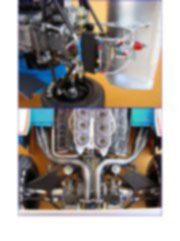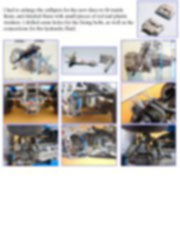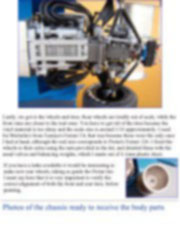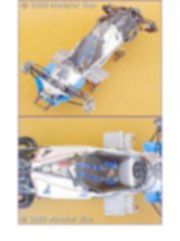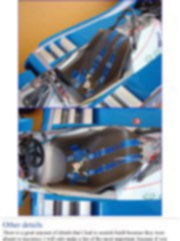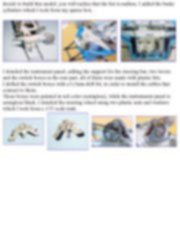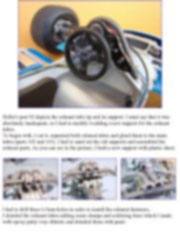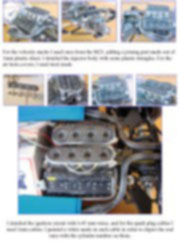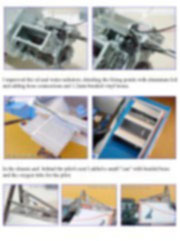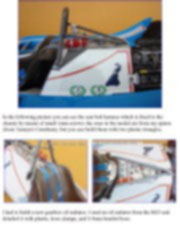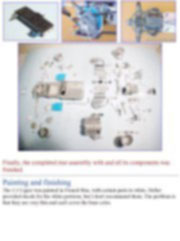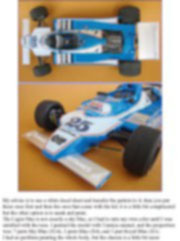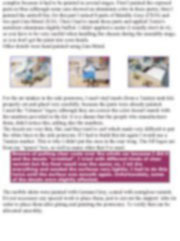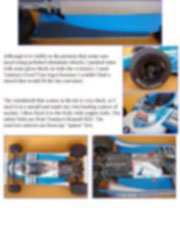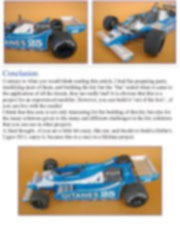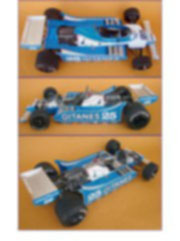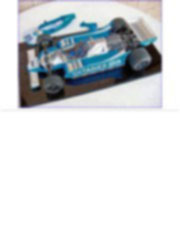 |
||||||||||||||||||||||||||||||||||||||||||||
|
Formula one |
|
|||||||||||||||||||||||||||||||||||||||||||
|
Detailing the Heller Ligier JS11 1/12 scale |
||||||||||||||||||||||||||||||||||||||||||||
|
by Mario Covalski © 2007 - 2013 |
||||||||||||||||||||||||||||||||||||||||||||
|
Legal Notice No material from Modeler Site any Web site owned, operated, licensed, or controlled by Mario Covalski & Associated may be copied, reproduced, republished, uploaded, posted, transmitted, or distributed in any way, except that you may download one copy of the materials on any single computer for your personal, non-commercial home use only, provided you keep intact all copyright and other proprietary notices. Modification of the materials or use of the materials for any other purpose is a violation of Mario Covalski & Associated's copyright and other proprietary rights. Read More here > Legal notice 1979 was a year dominated by the ground effect cars in the Formula 1, and unlike it happens today, many teams were competing under the same conditions, and many of them had possibilities to win the championship. That was the case for Lotus, Ferrari, Brabham, McLaren, Tyrrell, and Wolf, all of them had excellent racing machines and pilots. However, at the Argentinian Grand Prix, beginning the season, there was a French team showing that she would be fighting for the top prizes too, that team was Ligier Gitanes.
Ligier began his racing career in the F1 on January 25, 1976, at the Interlagos circuit, during the Brazilian Grand Prix. That same year, Jacques Lafitte, driving the JS05 model, finished within the six first places in five races, earning 20 points, which took the team Ligier to the eighth place in the Constructors Championship. That was beginning of Ligier's great adventure. In 1977, with the JS07 model, Ligier finished the World Championship in second place with 18 points. In 1978, with the same JS07 model, Jacques Lafitte finished eighth again, although this time with 19 points. For the 1979 season, the LIGIER GITANES team lined up two cars, the JS11 model with FORD-COSWORTH engines. Car #26, in the hands of Jacques Laffite, and car #25 for Patrick Depailler.
Although Jacques Lafitte recovered his competitiveness at the wheel of the JS11 #26, they faced a fiery competition from Ferrari, as well as a tremendous uplift from the Williams team. However, although they were facing technical problems, plus the handicap posed by Patrick Depailler accident due to the delta wing, the team LIGIER-GITANES finished the season in the third place of the World Championship, getting 61 points, with three victories.
The model In 1993 I had in my hands the 1/12 Ligier kit by Heller; I was about to buy it but the decal sheets were too old and in bad condition. Since that moment, I've always had in my mind the idea of building a model of the JS11 (which impressed me when I saw it in 1979), and detail it as much as possible, because these Heller kits are really poor in quality and inaccurate. So, a few months ago, while I was talking with an importer, I saw the box in his office and the idea came back back to my mind. Needless to say that a few hours later I was examining the kit in my house.
The kit is the most simple and inaccurate that I've tried to build in the last 20 years; I'm not trying to criticize Heller with this, what I'm saying is that this is a model to be built in a weekend, and not a model to superdetail; although considering the time when it was released, we can say (without comparing it with Tamiya) that it was interesting. Analyzing the components
The body The body measurements are slightly out of scale but the detailing, as well as the plastic quality, is good. The fit between the parts for the pontoons (parts 2, 3, 4, 5, 8, 9) is poor and it needs a lot of puttying and sanding.
This article is offered in PDF format to be read or printed using Acrobat reader, contact our webmaster > Here Includes more than 130 pics, here we show only the text pages.
Esta Nota es ofrecida en formato PDF, el cual puede ser leído o impreso usando el Acrobat reader, contacte a nuestro webmaster > Aquí Incluye más de 130 imágenes, aquí solo mostramos las paginas de texto.
Big size photos are only available in our PDF format. Support us ordering our notes in PDF > Here |
||||||||||||||||||||||||||||||||||||||||||||
